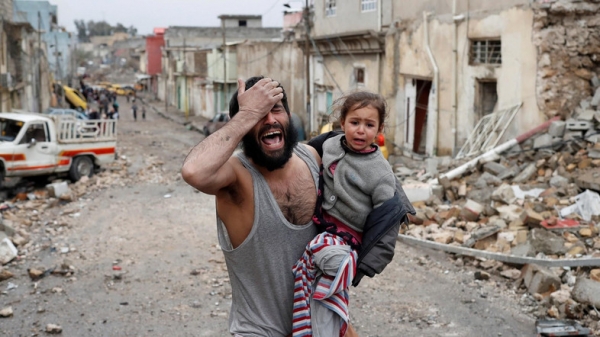The fight in Mosul to reclaim the city from the Islamic State (ISIS) is considered one of the most significant urban battles since World War II. The city, with a population of 1.8 million people, is divided by the Tigris river in the east and western areas. The fight began in October 2016, when the Kurdish Peshmerga and other pro-government forces engaged against ISIS in the outskirt of the city, and ended in July 2017 with the capture of the Old City of West Mosul.
The events in Mosul became a fundamental case study to understand the challenges of fighting in densely populated areas. The presence of thousands of civilians in the battlefield should translate in the adherence to the principle of proportionality, as stated in the international humanitarian law, that prohibits indiscriminate or disproportionate attacks. ISIS, on the contrary, embraced a different approach of aiming at causing mass casualties. West Mosul greatly suffered from the fight: 99% of it was destroyed, more than 800,000 inhabitants were displaced, and many civilians died as a result of being used as human shields by ISIS fighters or getting buried under ruins. Civilian casualties were also caused by artillery and improvised rocket assisted munitions that some units of the Iraqi Security Forces used in West Mosul, despite the Iraqi government guidance to limit heavy weapons use in densely populated areas.
The complexity of the Mosul battle is indeed a reminder that war tactics need constant adjustment to minimise civilian harm in urban warfare. Militaries are adopting special practices to tackle the problem, like the training of all the forces in specific urban situations, the anticipation of incidental harm from the use of specific weapons, the avoidance of explosive weapons, and the surveillance on civilian movements.
The lesson learnt from Mosul can be applied to future operations in Iraq, as well as in Raqqa, Syria, where the battle is still ongoing between the Syrian Democratic Forces (trained by U.S.) and ISIS. Constant improvement of warfare tactics can greatly reduce the number of civilian casualties, as well as minimise the impact of second and third order effects like the destruction of infrastructure and water supplies.
To know more, read:
https://www.justsecurity.org/43382/lessons-mosul-reduce-civilian-harm-urban-warfare/







